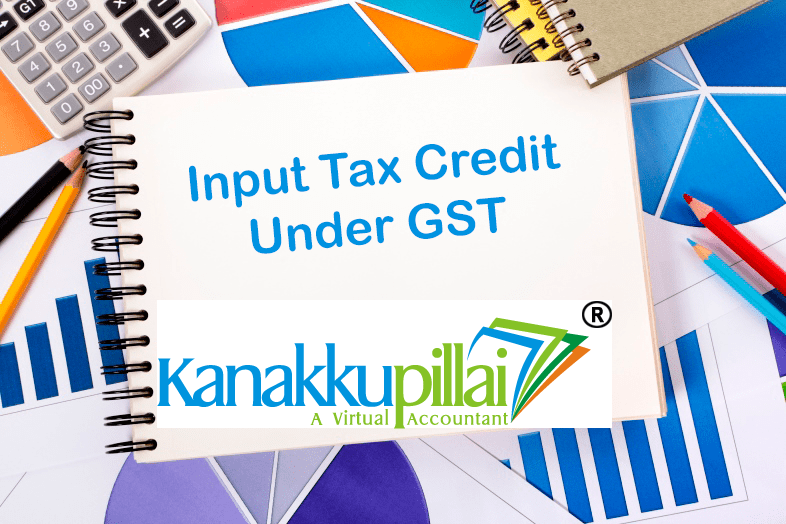Input Tax Credit (ITC) is one of the most important features of the Goods and Services Tax (GST) system in India. It allows businesses to minimize their tax liability by claiming credit for the GST paid on purchases made for business use. This helps to prevent the cascading effect of taxes and brings transparency to the tax process. In this blog, we will explain what ITC is, how it can be claimed, the conditions for eligibility, and how the calculation is done – all in simple terms.
What is Input Tax Credit (ITC)?
Input Tax Credit means reducing the tax paid on the inputs from the tax payable on the output. In other words, if a business pays GST on goods or services it buys (inputs), and then sells goods or services (output) on which it collects GST, the tax paid on inputs can be claimed as credit and reduced from the tax to be paid on sales.
For example, if you paid ₹10,000 as GST on purchases and collected ₹15,000 GST on sales, you only need to pay ₹5,000 to the government after claiming ITC of ₹10,000.
Who Can Claim ITC?
Only a registered person under GST can claim ITC. The credit is available only for business-related purchases and services. It cannot be claimed for personal use, exempt supplies, or for goods and services used to build immovable property (like buildings).
Conditions to Claim ITC under GST
To be eligible to claim the Input Tax Credit, the following conditions must be met:-
- You must be registered under GST.
- You must have a valid tax invoice or a debit note.
- Goods or services must have been received.
- The supplier must have paid GST to the government.
- The supplier must have filed their GST returns.
- You must file your own returns (GSTR-3B).
- ITC must be claimed within the prescribed time limit.
Documents Required to Claim ITC
To claim Input Tax Credit, you need the following documents:
- Tax invoice issued by a registered supplier
- Debit note issued by the supplier
- Bill of entry (for imports)
- Invoice for supply from Input Service Distributor (ISD)
- Invoice for reverse charge transactions
Time Limit for Claiming ITC
You must claim ITC before the earlier of the following:
- 30th November of the next financial year, or
- The date of filing the annual return (Form GSTR-9) for that financial year.
After this period, ITC cannot be claimed even if you are otherwise eligible.
How to Claim ITC: Step-by-Step Process
- Check GST invoices from suppliers. Make sure GSTIN, invoice number, and amount are correct.
- Match your purchases in GSTR-2B (auto-drafted by the portal from suppliers’ returns).
- File GSTR-3B return. ITC is to be claimed in Table 4 of this return.
- Pay the net GST liability. After adjusting eligible ITC, pay the balance tax (if any).
- Maintain records. Keep all invoices and documents for future reference and audits…!
How is ITC Calculated?
Here’s a basic formula:
Eligible ITC = GST paid on inputs (eligible purchases and expenses) – Ineligible ITC
Let’s take an example:
- GST paid on raw materials = ₹50,000
- GST paid on office rent = ₹10,000
- GST paid on car purchased for director’s personal use = ₹5,000 (Not eligible)
Total GST paid = ₹65,000
Ineligible ITC = ₹5,000
Eligible ITC = ₹65,000 – ₹5,000 = ₹60,000
This ₹60,000 can be used to pay output GST liability.
Utilization of ITC: Order of Use
As per GST rules, ITC must be used in the following order:
- IGST Credit: First use for IGST liability, then CGST/SGST.
- CGST Credit: First for CGST, then for IGST.
- SGST Credit: First for SGST, then for IGST.
- Cross-utilisation of CGST and SGST is not allowed.
Reversal of ITC
ITC must be reversed (i.e., paid back) if:
- Payment to the supplier is not made within 180 days.
- Inputs are used partly for personal use or for exempted supplies.
- Credit was wrongly claimed.
- Goods are lost, destroyed, or given as free samples.
Conclusion
Input Tax Credit under GST is a valuable benefit for businesses that helps minimise the tax liability and improve cash flow. However, to take full advantage of it, businesses must understand the eligibility rules, maintain proper documentation, and file returns on time. Accurate calculation and compliance can save money and prevent legal issues.
If you’re running a business, consult with a GST expert or accountant to make sure you’re claiming ITC correctly and efficiently.
Related Services





